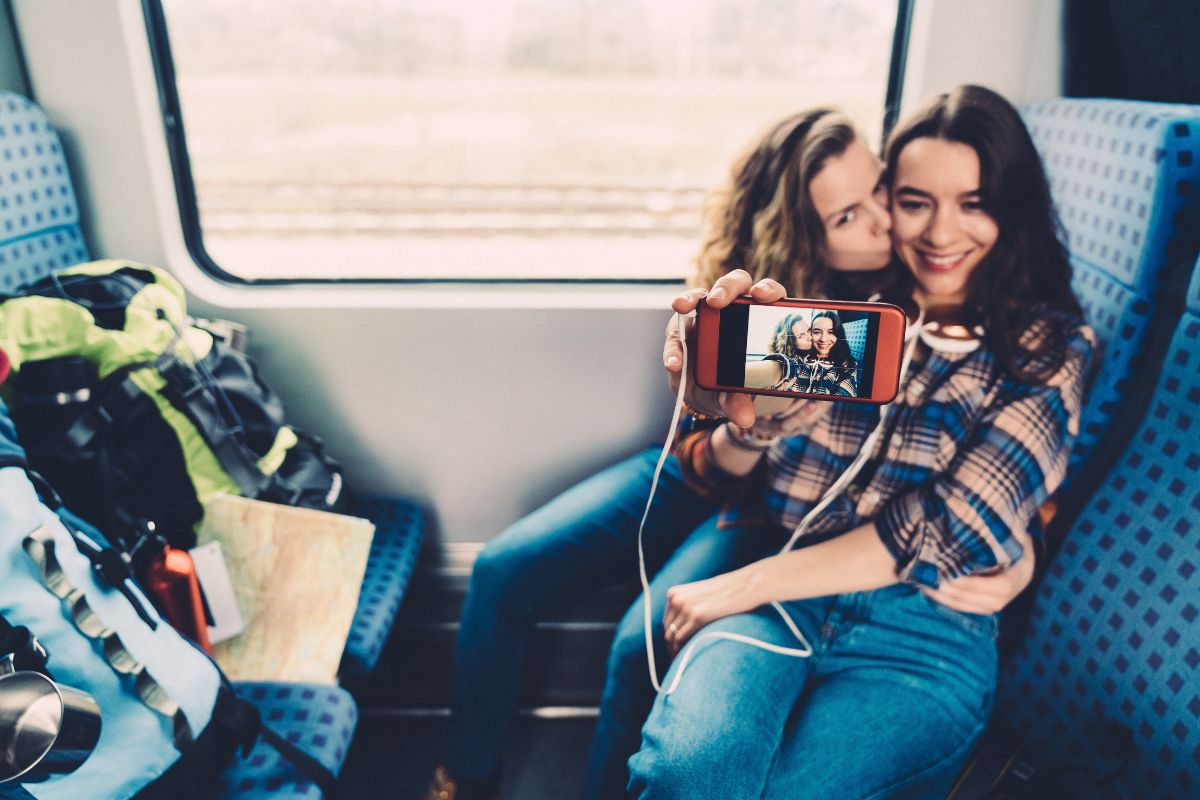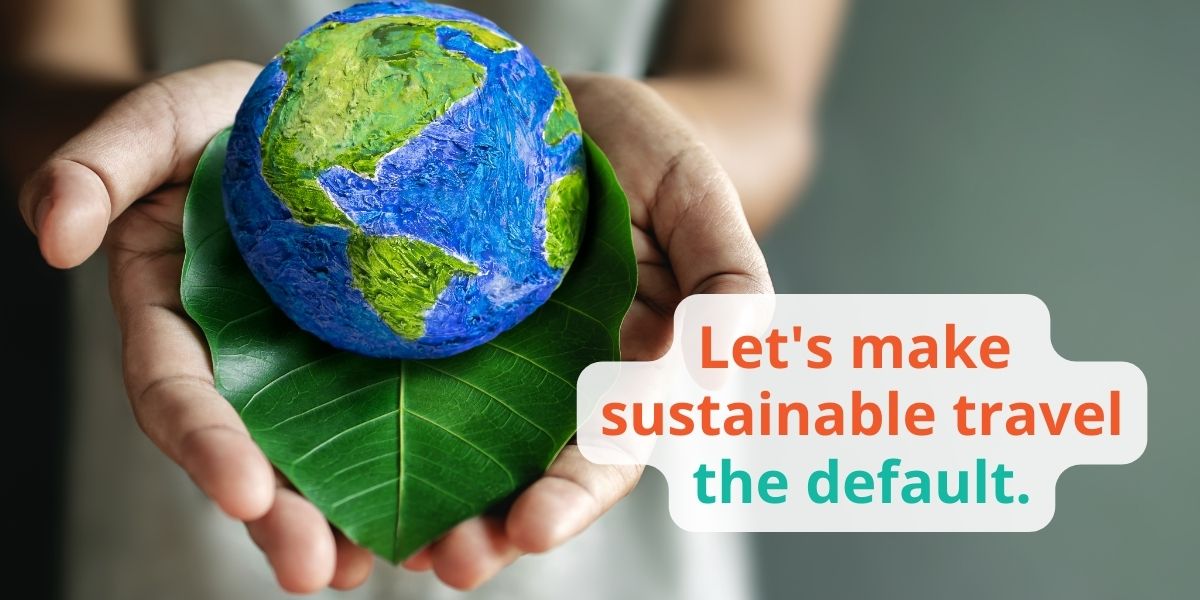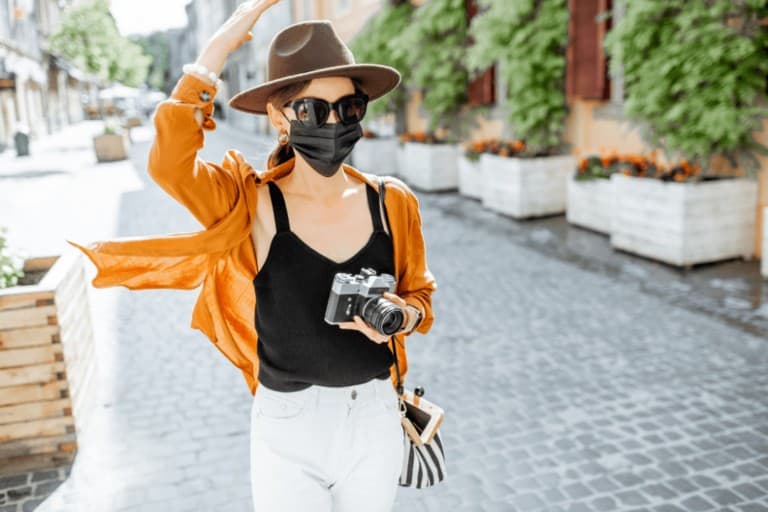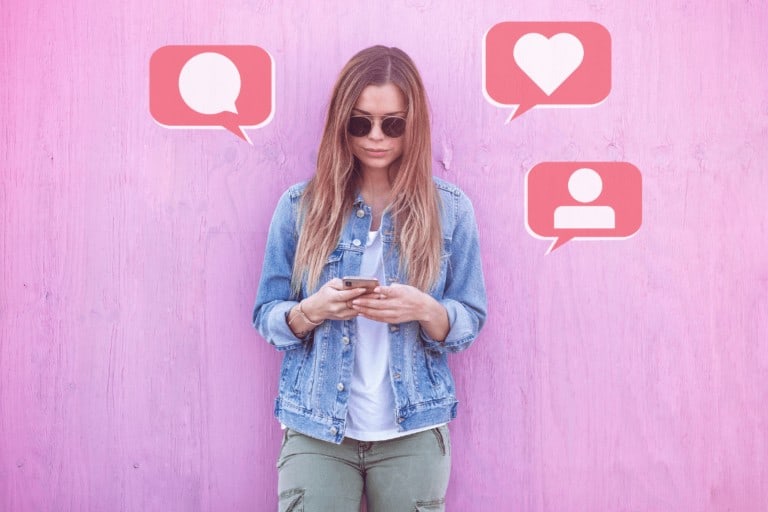Where Are We Now? A Guide to Travel Influencer Marketing.
Updated February 27, 2023
By Dalene Heck and Tawny Bertolozzi
In what may be the most obvious statement we’ve ever made on this blog: COVID-19 has had an immeasurable impact on many things. And influencer marketing has certainly not been immune to shifts and changes as the pandemic rolled along – travel influencers were especially hit hard. Revenue dried up overnight as campaigns were canceled; blogger advertising income tanked along with website traffic.
Some of those bloggers pivoted to promoting more local destinations, many creators jumped on the short video bandwagon as TikTok began its meteoric rise, and some influencers even explored pay-for-content type platforms like Patreon for the first time. Sadly though, many creator businesses simply didn’t survive those two plus years, but those that were able to make effective pivots are those that you still see posting today. They’ve endured just about the very worst thing that could happen to their businesses (a prolonged stand-still of travel), and are now using their newly flexed creative abilities to take their platforms to new heights.
So, what does this mean for you as an industry professional looking to work with travel influencers? Know first that things have changed A LOT in the past few years. Not just with the creators themselves, but in the wide scope of the industry that we all operate in.
The Benefits of Working With Influencers Has Increased Substantially
People spend more time online and are more connected than ever to online personalities. Travel influencers are adept at reaching a demographic that is engaged and actively looking for travel content. These influencers have a direct line to an increasingly profitable market as global tourism spend is rebounding with everyone itching to get out and travel once again.
We’ve long rallied on the merits of working with travel influencers, but it’s even a bigger deal today. Bottom line: Creators who do their job well have the earned trust of those who follow them, and trust makes all the difference. Recent reports and experiences confirm this:
- It was reported that in 2022, consumers are 2.4 times more likely to rate user-generated content as authentic when compared to brand-created content.
- “When we work with influencers, our closing ratio is much higher than any of our other marketing,” said a travel agency owner recently.
- And don’t forget that in the early days of COVID, the government of Finland successfully tapped into the strengths of local influencers to share urgent COVID-19 facts and restrictions.
As much as you try, this type of exposure, leverage, and prompt to action cannot be replicated solely by the content you produce in-house as a brand. Influencers are often hugely effective in taking your marketing messages to new heights.
Media Trends You Need to Know
The form of content and the platforms of influence have shifted dramatically in recent years. If you haven’t jumped into these new trends yet, then you are likely missing out.
Diversify Your Content.
We hate to lump this mention of diversity and inclusivity into a section on trends as this should have long been a defining feature of travel content. Alas, it has not been, and the industry is currently scrambling to correct past failures. And as evidenced by the most recent diversity scorecard, it still has a long way to go.
A certain aesthetic (specifically using white, straight, and able-bodied people) has dominated imagery and other content promoted by the travel industry since forever. While we are encouraged by some of the recent efforts we’ve seen (like with the All Inclusive Photo Project), we hope that there is still substantial more change to come. The bottom line is that if you, as a brand, are still subscribing to an outdated and non-inclusive aesthetic in your marketing, consumers are noticing. Not only are you then continuing to contribute to a damaging culture of underrepresentation, but you are likely also missing out on appealing to a large number of potential clients and visitors.
Video, Video, Video.
If a picture is worth a thousand words, imagine how much a video is worth! Actually, quite a bit, if the following stats are anything to go by:
- “People are consuming 18 hours of video online on average per week, up an astonishing 7.5 hours per week over the past 3 years” – Source
- “Brands can reduce costs as well as content needs by tapping into the power of user-generated videos.” – Source
- “Video has eclipsed traditional forms of marketing to become the most popular type of content online today.” – Source
What you do with video content – or, where you publish it – can also make a huge difference. (More below.)
Changes in the Social Media Platforms of Influence.
Platforms rise and fall for a number of reasons, causing frequent shifts in where to focus efforts. When it comes to content creators, some have gone all-in on single platforms to grow and exert their influence.
As such, a creator’s relationship with social media platforms can be tenuous, and depending on one channel for all audience engagement is risky. For our industry clients, we aim to recommend travel influencers that have a solid following on two or more social media channels (in addition to having a solid blog and/or YouTube channel, to provide for evergreen content). Not only does it help to hedge against changes in platform usage, but crossing channels also helps to reach new audiences.
That being said, which platform (or two) should you be focusing your efforts on (and how)? Some information on that is below.
-
- Instagram: The travel industry is strikingly photogenic, and thus there’s a distinctive connection between travelers and Instagram, making it the current powerhouse of the industry for several years running. The results speak for themselves – it has been estimated that at least 40% of Millennials choose their holiday destination based solely on how Instagrammable it is.
But Instagram itself is not immune to drastic internal changes. While it began as a platform to share photos, in June of 2021 it was announced that the platform is “no longer a photo sharing app”. Instead, the algorithm is now favoring video posts in the forms of Reels and Stories.The Metaverse is going all in on this trend, and Mark Zuckerberg has disclosed that video now accounts for almost half of all the time spent on both Facebook and Instagram with Reels being the largest contributor to engagement growth. Reels and Stories have been proven to have more shares, bring in more revenue, and receive twice as much engagement compared to other types of posts. As a travel brand looking to work with influencers to generate and promote content, consider that creators producing high-quality video content will lead to substantially more reach than those that just rely on static pictures alone. - YouTube: Travel vlogs receive 4x more social engagement (likes, comments, shares, favorites and subscriptions) than other types of travel content on YouTube. If you want your destination to be on the radar for upcoming travelers, YouTube continues to be an important platform to get your content on. Not to mention, YouTube is essentially another search engine as opposed to a strictly social platform, the shelf-life of a YouTube video is substantially longer than other forms of media shared online.
- TikTok: This platform is no longer new and its growth is unprecedented. While TikTok is currently best used to target GenZ or an audience under 34 years of age, it cannot be ignored for other audiences as well. (We personally know of many creators who are executing substantial travel influence on the app). The social platform is proving to be a clever way for certain travel attractions – museums, galleries, and more – to tap into a younger market in a fresh and innovative way.
Note: Compared to TikTok, Instagram users are more likely to have a disposable income to actually book travel. With TikTok catering more to GenZ, not only can they be fickle and easily swayed, that’s not typically the demographic to be the decision makers for travel plans. So TikTok may be on the rise, but for the time being, Instagram is still more profitable for travel destinations looking for consistent awareness and conversions.
Another note: Given the recent push by the US Federal Communications Commission for Apple and Google to remove the app from their stores over privacy concerns, some caution on going “all in” on TikTok is warranted. While the concerns raised are not new, some of the data supporting the FCC’s claim that it is “a sophisticated surveillance tool that harvests extensive amounts of personal and sensitive data,” is. The odds of a total ban happening are likely long, but the concerns are valid and still worth paying attention to.
- Facebook: Facebook has long been a great platform for targeted advertising to ensure that content is getting in front of the right people. Historically, the social network provides the highest ROI of all paid channels, with more than one in three brands citing Facebook as a better performer than Google Paid Search.
This is all changing, however. With new privacy measures being implemented in the face of the deprecation of third-party cookies and Apple’s new privacy features, old forms of targeting will be weakened or removed entirely. It’s definitely not the end of Facebook advertising, but the landscape will undoubtedly be shifting significantly. Here are some tips on how to navigate the changes to Facebook ads.Regardless of ad changes, like Instagram, video is a great way to organically interact on Facebook, and it’s something all travel brands should actively look into. Some of the best-performing companies on Facebook attribute it to being able to successfully utilize video to boost interactions.
Blogs.
Don’t forget about blogs built to serve our Google overlords: At 92.5 billion monthly visits, not only is Google the most visited website in the world but it is also still the most used website for curious people, typically when they are in the planning stages of their trip development. Utilizing influencers with a solid blog ranking has been, and still is, an effective influencer strategy that could benefit your travel brand for years to come.
Keep in mind that current algorithm tweaks to Google always aim to work to be better aligned with user trends and wants. Going forward, with video having such an impressionable reach in the social realm, it’s shown that “websites that include at least one video are 45 times more likely to rank higher in search results.” This means that using a traditional blogger is a good strategy but making sure they are well-versed in video is even better.
Podcasts.
Podcasts have become a regular part of worldwide media consumption (even though the amount of podcasts that exist are about 0.1% of the total amount of blogs)! Part of their charm is that podcasts are easily accessible and integrated into daily life like while commuting, exercising, or even folding laundry. And regular podcast audiences are intent listeners – they are dedicated, engaged, and trusting! A well-placed advertisement with a podcasting influencer can be a substantial win (and is frankly an underutilized strategy in the travel marketing world).
38% of listeners report purchasing things that are mentioned in podcasts. So instead of trying to capture the attention of people visually, podcasts are also a unique way to engage with an audience through creative means.
No More Cookies.
Moving to a cookieless world will affect digital media advertising (it is already, as mentioned regarding Facebook ads above). Did you know that by year end 2023, Google plans to officially stop supporting third-party cookies on its Chrome browser, effectively ending two decades of media and data-driven performance targeted advertising?
So what do cookies actually do? In addition to optimizing website visits, cookies also serve to enhance digital marketing strategies by personalizing the experience and aligning content to the interests and behaviors of each user. This means that specific ad targeting will be harder. As such, it will benefit you now to get a solid grasp on exactly who your audience is so that you can establish close and direct relationships with customers and visitors instead of relying on third parties. If you haven’t done such things as build an email list so you can establish that direct line of communication, then that is something to get on right away. Read more here on how to get started.
Important Travel Trends You Should Already Know
With travel being severely restricted for much of the past two years, the industry (and travelers themselves) took that time to discuss and address urgent issues. And as travel resumes in this new phase of the pandemic, it looks a lot different than it used to. Having the following travel trends top of mind when looking to market your brand and destination is essential.
Sustainability.
When variations of lockdowns happened around the world and tourism disappeared for a while, the earth took a breath. Not only did symptoms of overtourism abate, but with so many grounded flights, the earth was able to take a break from CO2 emissions. Taking a massive chunk of human mobility out of the equation, we were able to witness what happens to the planet when people stay home.
There is hope that we don’t return to those hectic and damaging days, or at the very least, that we all get better at handling it. Consumer reports indicate that sustainable and regenerative travel will become an even bigger part of the travel decision making process and in how people travel. Booking.com recently released the findings of a global research report in which analysts asked travelers if and how they planned to travel differently when borders reopen. The report found that 53% of global travelers want “to travel more sustainably in the future as Coronavirus has opened their eyes to humans’ impact on the environment.” Another 69% of respondents said they expect the travel industry to offer more sustainable travel options.
Some destinations are stepping up. Vancouver Island is moving away from destination management and focusing on destination stewardship. “Instead of a DMO, it is now a social enterprise called 4VI that supports four pillars of social responsibility: communities, businesses, culture and environment.” As well, Hawaii is rethinking their tourism model: “With the input of locals, who range from farmers to hotel owners, each of Hawaii’s four counties has created a strategic plan that stretches into 2025 and focuses on sustainable destination management rather than marketing.” Expect more to follow suit.
It remains to be seen if these pushes for sustainability from all angles will be immediately realized. But one thing is for certain, sustainable travel needs to become the default setting for the entire industry. And if you’re not addressing sustainable travel as a brand or destination (and talking about it to your would-be clients and visitors), then you will lose out in the long term.
Remote Work and Bleisure Travel.
By 2025, 36.2 million Americans will be working remotely — an 87% increase from pre-pandemic numbers. With this shift, more people are able to hit the road and work from anywhere as digital nomads, which offers a great opportunity for destinations.
To attract these travelers, consider what your destination has to offer. If your country is not ready to offer a specific digital nomad visa, then there are still efforts you can make to attract local remote workers. Make sure that fast (and free) WiFi is available to all, consider hotel room setup and amenities, and think hard about what you have to offer these working travelers in the after hours. There will be a push for more destinations to cater to this type of traveler (see this recent example from Saint John, New Brunswick), and their tendency for prolonged stays can make it very worth the effort.
Enjoying the Great Outdoors is Still On-Trend.
In the early days of the pandemic, when open air activities were all that were available to us, people embraced the great outdoors in droves. Those who hadn’t hiked before became new enthusiasts, and sales in things such as bicycles and camping gear went through the roof.
That newfound love appears here to stay. Not only because playing in the outdoors is generally awesome, but also because as much as we may hope for it to be true, COVID has not left us entirely, and surges are still expected in the months to come. Continuing to hike or bike allows people to (mostly) avoid crowds and tight, cramped spaces. Highligting the best of what you have to offer outdoors will serve you well.
Staycations and Short Road Trips.
With airfare on the rise and airports struggling with lack of staff, many travelers are choosing to stick closer to home with their upcoming travel plans. This gives destinations a great opportunity to take all they’ve learned about marketing locally in the past two years and build on it.
Continuing to Support Local Businesses.
Being stuck close to home for such an extended period of time showcased to everyone how important local businesses are. Throughout the pandemic there was a push to support local with people putting greater efforts into avoiding chains and supporting neighborhood businesses that were negatively hit by the pandemic. Similar efforts are now being directed to the travel industry, where locals support nearby boutique-style businesses in order to not only explore their own backyard in new and exciting ways, but also to help their community.
Merging Trends: How Working with Content Creators and Influencers Can Help
With all of the above-mentioned changes in the digital marketing and tourism landscape, influencers can play a key role in capitalizing on trends to help your tourism brand or destination move forward.
How? We have some ideas.
Content creators are just that: Experts at creating content.
When working together, include options to license their photos or video footage so that your destination or travel business can utilize their content on your own channels. New faces and/or a creative spin can mean a good boost in engagement.
Lean into short video.
Media networks have been predicting it for years and the time has certainly come: If you aren’t leaning into short and entertaining video content to engage with audiences, then you are definitely way behind. Pretty pictures just aren’t enough anymore. When working with creators, favour deliverables that include Reels or Stories over static Instagram feed photos, and prioritize them publishing unique content across all channels (Instagram is aiming to penalize those who repost their TikTok videos into the app). Consider also dabbling in the new(ish) world of YouTube Shorts. And don’t forget to score some of that content for your own use as well (see the point above).
Provide freedom and open itineraries.
Forget the days of the jam-packed FAM itineraries when it comes to influencers – let them explore and highlight things (like local businesses) that may not even be on you radar! Our Creator House concept has been praised for this exact reason, and if positioned correctly (i.e. with longer term stays using digital nomad influencers), such a campaign can help to attract the remote work crowd.
Speaking of sustainability…
- Ditch the swag bag. Or at the very least, think very hard about what you are putting in them so that the contents don’t end up in the trash.
- Consider alternate transportation. Getting media in and out of a destination via plane is the default position. However, depending on the distance, consider that it may be more eco-friendly to take a train, bus, or to have them drive. Calculating the carbon footprint of each method is easy to do and can also provide for a great sidebar to the story they share from the trip. While on the ground, also consider alternatives like utilizing local transit and bicycle or scooter options.
Get to the top of Google (without a paid Google ad.)
Most (if not all) destinations don’t pay much attention to where they rank in Google search. Bloggers do, and by engaging them to broadcast your marketing messages, you can get that key information in front of eager searchers without having to make sure your website is set up to rank properly.
Get to know your audience.
With cookies disappearing in the near future, now is the time to get to know your audience on a more personal level so that you can speak to them directly. Start building up your email newsletter list so that you have a pool of your own information to pull from. Engage content creators to develop lead magnets specifically for you (like a downloadable road trip guide for your destination). Not only will you have a well-designed asset to use into the future, but they can also provide promotion while they create it. Double win!
Don’t forget about local content creators.
We’ve heard from several brands and destinations who have commented that during the depths of the pandemic, local creators were very instrumental in getting their messaging out. Just because you are now more free to engage international influencers, don’t ignore the locals who got you through the tough times! Our GROW ambassador concept is an effective and educational way to keep that troupe of local content creators active and provide benefits for years to come.
Travel is back and here to stay. Adjusting to the new world of tourism – both via in-destination strategies and promotions online – will make a huge difference in how your brand performs now and in the long-term.
You may also want to read:
9 Tips for Hosting a Climate-Conscious Press Trip
Evaluating Influencers: What Data You Can (and Should) Ask Them For
- Instagram: The travel industry is strikingly photogenic, and thus there’s a distinctive connection between travelers and Instagram, making it the current powerhouse of the industry for several years running. The results speak for themselves – it has been estimated that at least 40% of Millennials choose their holiday destination based solely on how Instagrammable it is.













